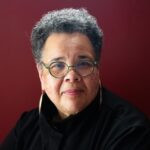Religion in Asia
Syllabi - Topic: Religion in Asia - 36 results
Select an item by clicking its checkboxA 2010 course by Mark Unno at the University of Oregon "examines the sacred scriptural traditions of East Asian Buddhism with a focus on Chinese and Japanese Zen, Pure Land Buddhism, and associated developments. . . . This examination will cover a wide range of themes against the backdrop of social and historical developments, including the development of sectarian traditions, cultural and national identity, gender and race."
A 2011 course by Mark Unno at the University of Oregon "traces select themes and developments in the history of Japanese religion . . . various aspects of intellectual and social history are examined including: the relation between state and religion; issues of gender, class, and cultural identity; religious experience; and ritual and institutional practices . . .(in) various forms of Japanese Buddhism including Zen and Pure Land as well as Shinto."
A 2010 course by Joseph Adler at Kenyon College "is a historical and contemporary survey of religious life in Japan, focusing on the Shinto and Buddhist traditions.."
A 2011 course by Joseph Adler at Kenyon College examines "the various expressions of Daoism (Taoism) in the Chinese religious tradition."
A 2013 course by Mario Poceski at the University of Florida "examines the historical trajectories, essential features, and key roles of religion in contemporary East Asia."
A 2005 course by Mark Unno at the University of Oregon focuses on "various Asian religious and philosophical traditions including Hinduism, Buddhism, Confucianism, and Taoism."
A 2014 course by Eric Nelson at the University of Massachusetts-Lowell explores "the early philosophical and religious traditions of China, India, Tibet, Japan, and Korea."
A 2013 course by Eric Nelson at the University of Massachusett- Lowell is an "introduction to Chinese philosophy from Kongzi (Confucius) and Laozi to Chan Buddhism and Neo-Confucianism."
A 1997 course by Charles Ess at Drury University offers an introduction to "some of the main ideas, beliefs, practices, and historical developments of eastern religions/philosophies."
A 2002 course by K.I. Koppedrayer at Wilfrid Laurier University explores "how Hindus, Buddhists and others have expressed their understanding of the nature, meaning and goal of human existence in stories, architecture and ritual."
A course by Andy Rotman at Smith College uses Indian film to explore its topic.
A course by Timothy Dobe at Grinnell College "offers a basic introduction to the beliefs and practices of each tradition and emphasizes the interactions, blendings, coexistence and competition of Asian religions as they occur in these dynamic contexts."
A 1994 course by Russell Kirkland at Macalester College uses literature to explore traditional Chinese answers to questions about the nature of reality.
A course by Todd Lewis at College of the Holy Cross surveys "the Buddhist traditions found in the Himalayas and Tibet, covering the elite philosophical, artistic, and soteriological traditions as well as popular literatures and devotional practices."
A 2000 course by Jeffrey Richey at Berea College introduces "basic historical, conceptual, and ritual dimensions of religious traditions that are central to South and Central Asian cultures (India, Pakistan, Bangladesh, Sri Lanka, Nepal, Bhutan, Tibet)."
A 2013 course by Wakoh Shannon Hickey at Alfred University "provides a brief introduction to the major religions traditions originating in India, China, and Japan."
A 1999 course by Russell Kirkland at the University of Georgia surveys Confucianism, Taoism, Buddhism, and Shinto.
A 2010 course by Mark Unno at the University of Oregon "examines three East Asian views of how human, animals, society, and nature are related within their respective worldviews . . . as it is found in key passages in the texts of three classical Chinese and Japanese figures: Mencius the Confucian . . . Zhuangzi the Daoist . . . and Shinran the Pure Land Buddhist." The work of Temple Grandin is also analyzed.
A 2007 course by Chad Bauman at Butler University that offers a comparative study of South Asian civilizations, with special attention to Pakistan and India.
A 2012 course by Mark Unno at the University of Oregon "examines key concepts and practices from such Asian religions as Hinduism, Buddhism, Confucianism, and Daoism."
A 2010 course by Mark Unno at the University of Oregon examines "various Chinese religious traditions, in particular Confucianism, Daoism, and Buddhism."
A 2001 course by Ding-hwa Hsieh at Truman State University offers "a general survey of Chinese religious traditions, including Taoism, Confucianism, Buddhism, and popular beliefs and practices."
A 2011 course by Joseph Adler at Kenyon College "is a survey of the major historical and contemporary currents of religious thought and practice in Chinese culture."
A 1993 course by Russell Kirkland at Macalester College explores "perennial concerns through the eyes of . . . the thinkers of classical China" such as Confucius, the Mohist school, the Taoist school, and the Legalist school.
A 1999 course by Warren Frisina at Hofstra University offers "an in-depth look at the primary texts in ancient Confucianism and Taoism."
A 2010 course by Ken Brashier at Reed College aims "to learn the mechanics of translation and to develop an awareness of what it means to transform the words of one culture to that of another."
A 2008 course by Ken Brashier at Reed College studies the "hell scrolls" in the college's possession, as well as others, to understand how their depiction of hell "Chinese scrolls depicting hell combine image and text to communicate religious ideas to a broad audience; they offer ethics, entertainment and an education on how the cosmos works, warning about the certainties of karmic retribution."
A 2010 course by Ken Brashier at Reed College surveys "Chinese notions of time and space, but we also looking at the human ritualized reaction to those particular notions of time and space."
A course by Jeffrey Richey at Berea College introduces "the East Asian spiritual heritage in China, Korea, and Japan (Confucian, Daoist, Buddhist, Shinto, folk, etc.) -- its past, as well as its present and future. We will also give some of our time to the consideration of Christianity as an East Asian religion, and to the situations of East Asian religions in North America."
A 2003 course by Joseph Adler at Kenyon College explores "the philosophical and cultural history of the Confucian tradition, primarily in China, from its inception to the present day."
A 2006 course by Catherine Wessinger at Loyola University New Orleans aims to " their histories, worldviews, methods of achieving their ultimate goals, ethics, artistic expressions, and social institutions."
A 2011 course by Nathan Katz and Sanani Chaitanya Pragya at Florida International University explores the "understandings of âself and liberationâ in classic texts from the traditions of Theravada Buddhism, Jainism, Yoga, and Tibetan Mahayana Buddhism."
A 2011 course by Ken Brashier at Reed College analyzes Chinese religious traditions (Confucian, Daoist, and Buddhism) "as an âidea systemâ highlights not only the main components of a religion but also how they interrelate with one another."
A 2020 course by Bryan Lowe at Princeton University "offers a roughly chronological narrative of key themes in the study of Japanese Buddhism from ancient times through the modern day."
A 2020 course by Bryan Lowe at Princeton University "introduces the religious traditions of Japan from the earliest myths to present-day practices" with special attention to the interplay of religion and culture.

